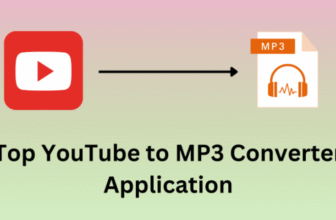
The dream of every musician is to reach a global audience and share their art with the world. Traditionally, distributors acted as gatekeepers, controlling access to digital platforms and charging fees or commissions. However, the music industry has evolved, and you can now release your track on all digital stores without a distributor. By embracing modern tools and strategies, independent artists can distribute their music widely while retaining full creative and financial control.
The Changing Landscape of Music Distribution
The advent of digital platforms like Spotify, Apple Music, and YouTube Music has democratized the music industry. Earlier, artists needed record labels or distributors to place their music on these platforms. Today, technology has made it possible for independent artists to bypass these intermediaries and directly reach listeners.
Why Consider Releasing Music Without a Distributor?
- Full Revenue Control: Traditional distributors take a percentage of your earnings or charge hefty fees. By self-releasing, all profits from streams and downloads go directly to you.
- Creative Independence: Distributors sometimes impose restrictions on release dates, pricing, or promotional strategies. Independent releases give you full control over your artistic vision.
- Flexibility: Without a distributor, you can adapt your release strategy to fit your goals, whether that’s releasing singles frequently or focusing on a large album project.
Step 1: Choose the Right Platforms
The first step in releasing your music without a distributor is selecting platforms that support direct uploads. Here are some of the best options:
- Bandcamp: Known for its artist-friendly approach, Bandcamp allows musicians to upload and sell tracks directly to fans. You can set your prices, offer merchandise, and connect with listeners worldwide.
- SoundCloud Pro: With a paid SoundCloud Pro subscription, you can upload unlimited tracks and monetize your music directly.
- Audius: A decentralized music-sharing platform, Audius gives artists full ownership of their work and rewards them with cryptocurrency.
- YouTube: Uploading your music videos or audio tracks to YouTube is a great way to reach a vast audience while monetizing through ads.
Step 2: Optimize Your Metadata
Metadata is the information attached to your music files, including song title, artist name, album title, genre, and release date. Ensuring your metadata is accurate and consistent is crucial for making your music discoverable on digital platforms.
- Why Metadata Matters: Digital platforms use metadata to categorize and display your music correctly. Errors can lead to misplaced tracks or reduced visibility.
- Tips for Effective Metadata:
- Use a consistent artist name across all platforms.
- Add genre tags to help fans find your music.
- Include release dates to align with your promotional strategy.
Step 3: Master Your Music for Digital Stores
Audio quality is a key factor in creating a professional impression. Before uploading your track, ensure it’s properly mixed and mastered for digital platforms.
- Use Professional Tools: Platforms like LANDR and eMastered offer affordable online mastering services.
- Check File Formats: Most digital stores require audio files in WAV format with specific bitrates (e.g., 16-bit, 44.1 kHz).
Step 4: Craft a Marketing Plan
Releasing music is only half the battle. To reach a global audience, you need a well-thought-out marketing strategy.
- Social Media Campaigns: Use platforms like Instagram, TikTok, and Twitter to tease your release. Share behind-the-scenes content, snippets, and visuals to engage your audience.
- Collaborate with Influencers: Partner with influencers or playlist curators in your genre to expand your reach.
- Email Marketing: Build a mailing list of fans and keep them informed about new releases, events, and exclusive offers.
Step 5: Engage with Your Audience
Building a connection with your listeners is essential for long-term success. Engaged fans are more likely to stream, share, and support your music.
- Live Streams: Host virtual listening parties or Q&A sessions on platforms like Instagram Live or Twitch.
- Fan Contests: Encourage fans to create covers or remixes of your track, and offer prizes for the best entries.
- Direct Communication: Reply to comments, messages, and reviews to show your appreciation for their support.
Step 6: Monetize Your Music
Releasing your track without a distributor doesn’t mean you have to miss out on revenue opportunities.
- Streaming Royalties: Platforms like SoundCloud Pro and YouTube offer monetization options that allow you to earn revenue from streams.
- Direct Sales: Use Bandcamp or your personal website to sell music directly to fans, keeping a larger share of the profits.
- Merchandise: Bundle your music with T-shirts, posters, or other merchandise to increase earnings.
Step 7: Track Your Music’s Performance
Monitoring your music’s performance helps you understand what works and what doesn’t. Most platforms provide analytics tools to track streams, downloads, and audience demographics.
- Key Metrics to Monitor:
- Number of plays and downloads
- Audience location and age group
- Engagement rates (likes, shares, comments)
- Refine Your Strategy: Use these insights to improve your marketing efforts, target specific demographics, and plan future releases.
Common Challenges and How to Overcome Them
Releasing music without a distributor can come with challenges, but they are manageable with the right approach.
- Limited Visibility: Without a distributor’s network, it may take longer to build an audience. Overcome this by leveraging social media and collaborating with other artists.
- Time Management: Handling everything from uploads to promotions can be overwhelming. Create a schedule to streamline your tasks.
- Copyright Concerns: Ensure your music doesn’t infringe on copyright laws. Use platforms like ASCAP or BMI to register your work and protect your rights.
Success Stories: Independent Artists Who Made It Big
Many artists have achieved remarkable success by releasing music without distributors. Take Billie Eilish, for example, who started her career by uploading tracks to SoundCloud. With dedication, innovation, and effective marketing, you too can turn your independent release into a global sensation.
Conclusion
Releasing your track on all digital stores without a distributor is an achievable goal for independent artists. By choosing the right platforms, optimizing your metadata, mastering your audio, and crafting a solid marketing plan, you can reach a global audience while retaining full control of your career. The tools and opportunities are now in your hands—don’t wait for a distributor to dictate your success.
Related Articles:
For further reading, explore these related articles:
For additional resources on music marketing and distribution, visit DMT Records Private Limited.






